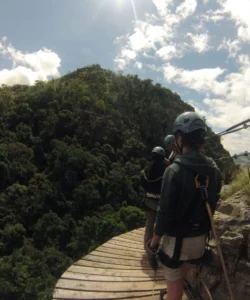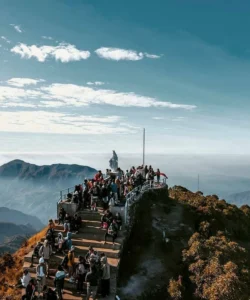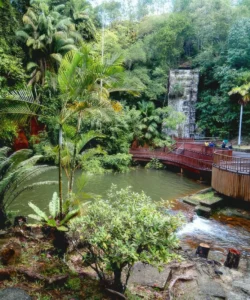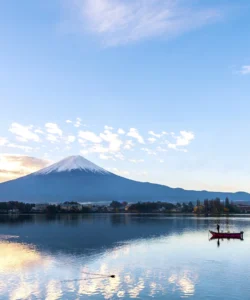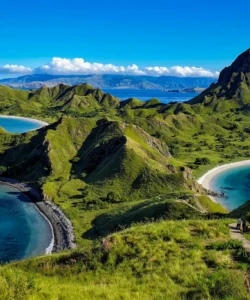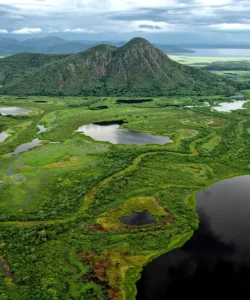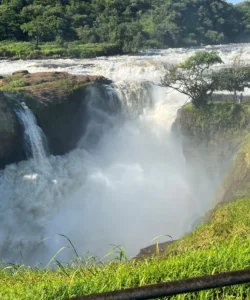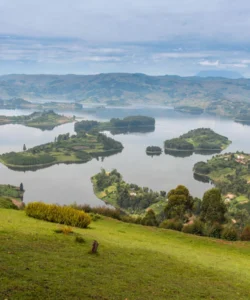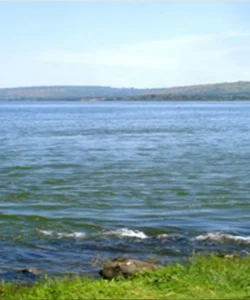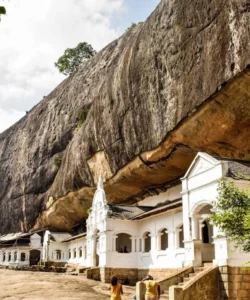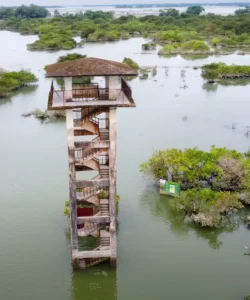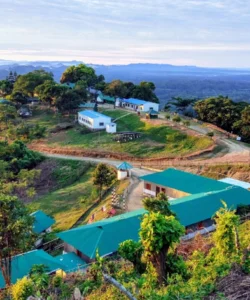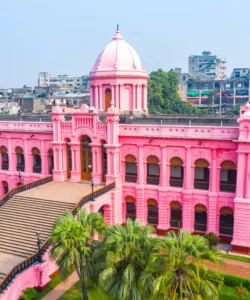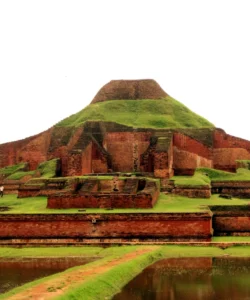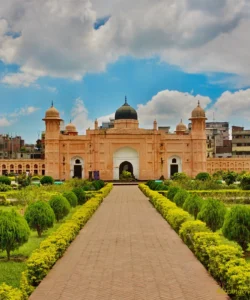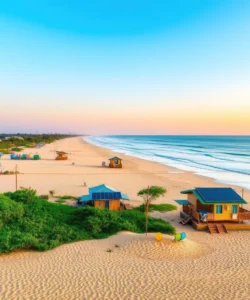The Hunza Valley is a spectacular mountainous valley located in the Gilgit-Baltistan region of Pakistan. Often hailed as “Heaven on Earth” or “the Land of the Immortals,” it is renowned globally for its breathtaking natural beauty, towering snow-capped peaks, ancient cultural heritage, and the legendary longevity of its inhabitants.
Name: Hunza Valley (Urdu: ہنزہ وادی)
Address: Gilgit-Baltistan, Pakistan. It is situated in the northernmost part of Pakistan, nestled amidst the Karakoram mountain range, stretching along the Hunza River. The main towns and tourist hubs in the valley include Karimabad (the capital of Hunza district) and Aliabad.
How to Get There:
Accessing the Hunza Valley primarily involves reaching Gilgit or directly driving the Karakoram Highway.
- By Air to Gilgit (GIL): The most common way for international travelers. Gilgit Airport has direct flights from Islamabad (ISB). Flights are highly weather-dependent and can be delayed or canceled. From Gilgit Airport, you can hire a taxi or shared van to Karimabad (approx. 2-3 hours drive along the Karakoram Highway).
- By Road via Karakoram Highway (KKH): This is arguably the most iconic and adventurous way to reach Hunza, offering spectacular mountain scenery.
- From Islamabad/Rawalpindi: The drive along the KKH to Karimabad takes about 16-20 hours, often broken into two days with an overnight stop (e.g., in Besham or Chilas). This route is famous for its engineering marvel, carving through some of the world’s highest mountain ranges.
- From Gilgit: Karimabad is about 100 km (2-3 hours) north of Gilgit on the KKH.
- Public Transport: Long-distance buses (e.g., NATCO, Daewoo) operate along the KKH, connecting Islamabad/Rawalpindi with Gilgit and further north to Karimabad and Sost (near the Chinese border).
- Private Car/Jeep: Hiring a private vehicle with a driver offers flexibility and comfort.
- Best Time to Visit:
- Spring (April-May): Famous for the apricot blossom season, when the valley turns pink and white. Weather is cool and pleasant.
- Summer (June-August): Peak season with warm days, lush greenery, and access to all high-altitude areas and trekking.
- Autumn (September-October): Famous for the autumn colors, when the poplar, apricot, and walnut trees turn brilliant hues of gold, orange, and red, creating a stunning spectacle.
- Winter (November-March): Very cold, with heavy snowfall, making some areas inaccessible. The KKH often remains open, but tourist activities are limited.
- Permit: Generally, no special permits are required for foreign tourists to visit the main Hunza Valley, but they are needed for treks into restricted border areas.
Landscape and Architecture:
The Hunza Valley’s “architecture” is both natural, defined by its colossal mountains, and man-made, reflecting centuries of adaptation and unique cultural heritage.
- Towering Peaks of the Karakoram: The valley is cradled by some of the most spectacular and formidable mountains in the world, part of the Karakoram Range. Notable peaks that frame the valley include:
- Rakaposhi: A stunning pyramid-shaped peak (7,788 meters / 25,551 ft) that dominates the skyline, its summit often shrouded in snow.
- Diran: Another prominent peak (7,266 meters / 23,839 ft) near Rakaposhi.
- Golden Peak (Spantik): (7,027 meters / 23,054 ft) known for its golden glow at sunrise/sunset.
- Ultar Sar: A challenging technical peak (7,388 meters / 24,239 ft) near Karimabad.
- Hunza River: The Hunza River flows through the heart of the valley, its glacial meltwater often appearing milky blue or grey, carving a dramatic gorge.
- Glaciers: Numerous glaciers descend from the high peaks into the valleys, some even reaching the Karakoram Highway (e.g., Passu Glacier, Batura Glacier).
- Terraced Fields and Orchards: The valley floors and lower slopes are characterized by meticulously maintained terraced fields and abundant fruit orchards (apricots, apples, peaches, cherries, walnuts). These create a vibrant green or autumnal color palette against the stark mountains.
- Ancient Forts: Two prominent historical structures stand majestically on the valley’s hillsides, showcasing traditional Hunza architecture and strategic defense:
- Baltit Fort: A magnificent, centuries-old fort (rebuilt and renovated over time), perched dramatically on a ridge above Karimabad. Its unique architecture features multi-story wooden structures with intricate carvings, mud-plastered walls, and distinctive tiered wooden balconies, offering panoramic views of the valley. It was the former seat of the Mir of Hunza.
- Altit Fort: An even older fort (estimated over 1,100 years old), located on a precarious rock above the Altit village. It’s renowned for its ancient watchtower and simpler, more rustic stone and mud-brick construction, representing an earlier phase of Hunza’s history.
- Vernacular Architecture: Traditional Hunza villages feature homes built from local stone, wood, and mud, adapted to the mountainous terrain and climate.
- Attabad Lake: A stunning turquoise-blue lake formed tragically in 2010 due to a massive landslide that blocked the Hunza River. It’s now a major tourist attraction, offering boat rides against a dramatic backdrop of sheer cliffs.
What Makes It Famous:
- Breathtaking Mountain Scenery: The Hunza Valley is globally renowned for its unparalleled natural beauty, featuring dramatic vistas of some of the world’s highest and most majestic peaks, deep gorges, and vibrant terraced landscapes.
- Ancient Forts (Baltit & Altit): The remarkably well-preserved ancient forts of Baltit and Altit are major attractions, offering insights into the region’s rich history, royal legacy, and unique indigenous architecture.
- “Land of the Immortals” / Longevity: Hunza has long been fabled for the exceptional longevity and health of its inhabitants, often attributed to their traditional diet (rich in apricots, organic produce) and pure mountain air/water. While the claims are often romanticized, it contributes to the valley’s mystique.
- Autumn Colors and Apricot Blossoms: The valley is particularly famous for its stunning seasonal transformations, with the pink and white apricot blossoms in spring and the golden-red autumn foliage in September/October drawing photographers and nature lovers.
- Friendliness of the People: The local people of Hunza, predominantly Ismaili Muslims (a peaceful branch of Shia Islam), are widely known for their hospitality, warmth, and resilience.
- Attabad Lake: This spectacular turquoise lake has become a major draw, offering boat rides and a unique landscape created by a natural disaster.
- Gateway to Gilgit-Baltistan and KKH: It’s a central point along the legendary Karakoram Highway, serving as a base for exploring other parts of Gilgit-Baltistan and a testament to the KKH’s engineering marvel.
Differences from Some Other Wonders:
- Valley as a Holistic Experience: Unlike singular peaks (K2, Hkakabo Razi), specific glaciers (Baltoro Glacier), or isolated temples, Hunza Valley is famous as a holistic high-mountain valley experience, combining diverse natural beauty (peaks, rivers, glaciers, orchards) with ancient forts and a unique living culture.
- Blend of Natural Grandeur and Human Adaptation: While the Himalaya are vast, Hunza particularly showcases the harmonious adaptation of human life (terraced farming, forts, villages) to an extreme mountain environment, creating a cultural landscape within majestic nature.
- Fabled Longevity and “Paradise” Image: The romanticized image of Hunza as a place of longevity, health, and a near-utopian lifestyle (“Shangri-La”) is a unique aspect of its fame, distinct from other mountain regions.
- Iconic Seasonal Transformations: While many places have seasons, Hunza’s fame is deeply tied to its dramatic and highly celebrated seasonal changes specifically related to fruit blossoms (spring) and autumn foliage, making it a different kind of natural spectacle than continuous features.
- Historical Forts as Central Landmarks: The presence of the well-preserved Baltit and Altit Forts, showcasing the unique architecture of Hunza’s former princely state, provides a specific historical and cultural anchor not typically found in purely natural mountain valleys.
- Specific Religious Denomination: The prevalence of the Ismaili branch of Shia Islam among the local population gives the valley a particular cultural and social character, distinct from the broader Sunni or other Shia populations in other parts of Pakistan.
- Impact of Attabad Lake: The very recent (2010) and dramatic formation of Attabad Lake due to a landslide is a unique, dynamic geological event that has created a new, stunning natural attraction within the valley.
Hunza Valley Photos:




















